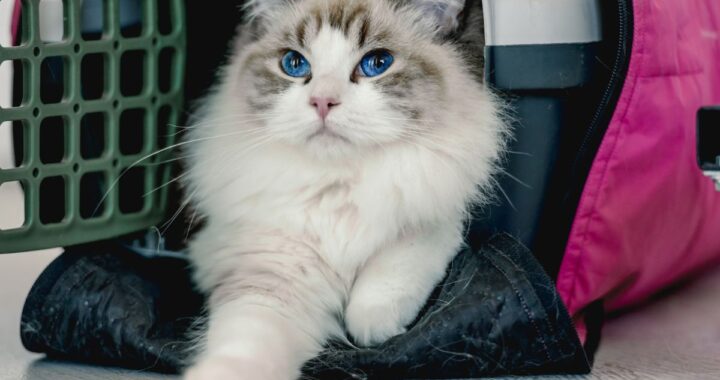There are many reasons why a lot of us will have to sit through a flight, a drive, or a train ride. For some of us, it might be the first step into a new chapter of our lives elsewhere, while for others it may be a way to hit pause on the current chapters of our lives. As exciting as traveling can be, after spending a few years at home with our furry friends, the thought of leaving our kitties at home without us may sound unthinkable. Fortunately, we have a few tips to help you make traveling with your cat a good ex-purr-ience for both of you!
Cats can tend to be homebodies. For the most part, their priorities are comfort and safety. But with adequate exposure and preparation prior to the trip, it is possible to successfully travel with one. The best way to teach your cat how to travel is by introducing them to traveling as kittens. However, even if you have an adult cat, the acclimation process doesn’t change very much.
Your first priority is to check in with your veterinarian. As someone who is familiar with your kitty, they will be able to tell you if your cat is physically and mentally prepared for traveling. For highly anxious kitties, your veterinarian may also be able to prescribe a medication to help them stay calm. While you are visiting your vet, it is especially important to make sure your cat is caught up on all their vaccines and has an updated microchip with your contact information.
Preparation
You will need an appropriate carrier (if you are traveling in a car make sure it’s crash-tested). Prior to your travels, you will want your cat to find comfort in their carrier. Make the carrier comfy with familiar bedding and toys that have both your and your cat’s scents. Stressed cats tend to look for small spaces to squeeze into. Get them accustomed to entering the carrier on their own by making it a part of their everyday surroundings.
By Car
- Be sure to keep your kitty contained:if they crawl into spaces between or under seats, or by the pedals in your car, they could compromise their safety, and yours.
- In preparation for your travels, take your cats on a series of short drives. This will allow them to get used to riding in a car. When doing this, keep them securely closed inside their carrier.
By Train
- If your cat is traveling by train, check the policies in place for pet travel. Some of the main policies that affect your ability to travel without kitties include:
- Amtrak allows pets up to 20 pounds (combined weight of animal and carrier).
- Amtrak’s time limit for pet travel is 7 hours.
- It is also important to note that Amtrack only allows 5 pets per train and 1 pet per person so making reservations in a timely matter is important!
By Airplane
- Although rules for flying will depend on the airlines you choose, most will require some sort of check-in, and will have carrier size, weight, cat breed restrictions, and fees for flying with your pets. Be sure to research the restrictions and book your pet’s spot in plenty of time!
Transportation
Make sure to feed your cat at least three hours prior to the trip regardless of whether you traveling by car, train, or plane. If you are traveling by car, their carriers should be kept in the back seat. Putting them in the front seat could put them in danger if airbags deploy.
What to pack
Health
- Travel papers (medical history and vaccination record)
- Medication
- Pet first-aid kit
- Food
- Food and Water Dishes
Hygiene
- Litter and a Litterbox (If you are traveling by car)
- Waste scoop
- Plastic bags
- Cleaning supplies (such as pet friendly wet wipes and disinfectant wipes)
Comfort
- Grooming supplies
- Bedding
- Cat Toys
Coming home
For kitties in multi-pet households who traveled without the rest of their clan, coming home may be unsettling for everyone. To give all the pets the time and space they may need to re-adjust, re-introduce your kitty to the home in the carrier. If all the pets seem calm, allow your cat to come out of the carrier as you would after a trip to the vet. If there is any tension, give your cat a space to themselves for at least 24 hours to adjust to all the scents they were previously familiar with. This can also be done by using fabric to swap scents between your pets. Last but not least, remember to breathe and give the cat some scritches and yourself a pat on the back because traveling with pets is no small feat. Reward yourself by enjoying good com-purr-ny in the comfort of your own home!




